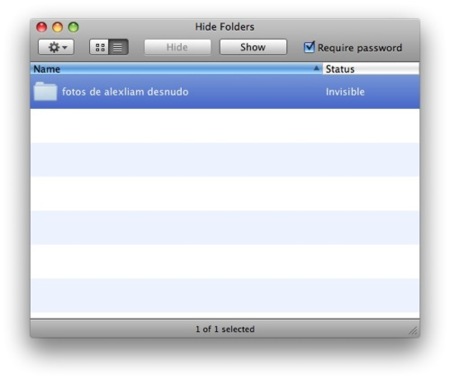
- #Hide folders on mac how to#
- #Hide folders on mac for mac#
- #Hide folders on mac mac os x#
- #Hide folders on mac software#
- #Hide folders on mac professional#
Here are 4 different ways that you can use to Hide files and folders in Mac.

The process of hiding files and folders on Mac should be done with caution because if it doesn’t work out, then your files will be visible to anyone who ventures to that folder or window. Part 2: 4 Proven Ways to Hide Files and Folders on Mac Hiding the extra copies will remove it from sight. To save multiple copies: Hiding the copies of a file is helpful when you want to safeguard it against file loss. 12 hours ago &0183 &32 The Bitcoin white paper has been found hidden in Apples system files for machines running macOS Catalina or later. Hiding your files or folders on Mac makes it impossible for them to get to them. So it is of paramount importance that this information does not fall into the hands of people who may exploit it.
#Hide folders on mac professional#
Sensitive information: You Mac can contain very sensitive information, either related to your private or professional life. Hiding files on Mac gives you a peace of mind that your files are not used by anyone else. To keep the file safe: If your Mac is used by other members of the family or office, then there is a chance they might use your file or gain access to them. And there are many reasons why we would want to keep the files hidden from others.
#Hide folders on mac how to#

#Hide folders on mac for mac#
#Hide folders on mac software#
Recover Deleted Files on Mac Without Software.Top 10 Mac Data Recovery Software Reviews.Recover Lost Data on Mac after Upgrading to macOS Mojave.Undo Empty Trash Mac (macOS Mojave Supported).The chflags nohidden command is the same thing we use to show the Library directory in OS X Lion, and accessing the folder once it is hidden is done the same way we access the user Library folder when it’s hidden as well. If you read OSXDaily with any regularity, some of this will be familiar to you for good reason.

If you blocked the contents from Spotlight, you may want to remove it from there as well to be able to find and locate as usual. As before, launch the Terminal applicationĪs an example, to unhide a folder on the users desktop named “Secret Folder” the command would be:Ĭhflags nohidden ~/Desktop/Secret Folder/Īgain, the folder will become immediately visible to the desktop.If you no longer want the folder to be hidden anymore, here’s what to do: You’ll now be inside the hidden folder, able to open, copy, move, and use the contained files and folders as usual. Enter the same path to the folder as you used when hiding it:.
#Hide folders on mac mac os x#
From the Mac OS X desktop, hit Command+Shift+G to bring up the “Go To Folder” window.Now that the folder is hidden, here is how to access it: While this hides folders from being visible in the GUI and will keep 95% of users unaware of the folders existence, keep in mind that practically anything is visible from the command line, and if an advanced user was keen or determined enough, they could probably track down the folder or its contents. This makes sure that none of the files inside of it can be found through the Spotlight search feature in OS X. If you want to truly hide the folder and it’s contents, take an extra step and exclude the folder from Spotlight indexing. This includes everything contained within the folder as well, whether they are more files or other folders. The folder will immediately disappear from visibility, becoming hidden from the Finder. Launch the Terminal, found in /Applications/Utilities/ or from Launchpadįor example, to hide a folder in my home directory named “Secrets” the command would be:.


 0 kommentar(er)
0 kommentar(er)
